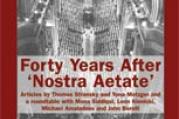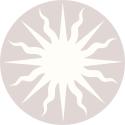Loading...
Click here if you don’t see subscription options
Click here if you don’t see subscription options

Arts & Culture
Books
Oct 31, 2005 issueA friend reports the story of a woman widowed from a Catholic husband with two small children Honoring her pledge to raise her children as Catholics she inquired whether she too might become a Catholic But she was discouraged from pursuing her interest by the indifference of the two priests she

News
CARA Honors Sister Katarina Schuth for Research on Catholic SeminariesThe Center for Applied Research in the Apostolate honored Katarina Schuth, O.S.F., on Oct. 5 for her extensive research on U.S. Catholic seminaries. Researchers must report their findings with wisdom and accuracy and avoid being c

Only through the body does the way, the ascent to the life of blessedness, lie open to us.- St. Bernard of Clairvaux, Sermons on the Song of SongsThe Song of Songs has long held a privileged place in the mystical theology and monastic tradition of the church. Commentary on this erotically charg

Faith in Focus
For someone who came onto the world stage over 26 years ago as a vibrant and active runner, swimmer and skier, Pope John Paul II’s suffering throughout his almost 85 years of life is especially memorable. Many of us, at difficult times in our lives, identified with him. His intense suffering i

Editorials
On October 28, 1965, during the fourth and last session of the Second Vatican Council (1962-1965), Pope Paul VI formally promulgated the council’s Declaration on the Relationship of the Church to Non-Christian Religions. Like other documents promulgated by the council, it would be identified b

I have often wondered about the long-range value of writing, whether books or articles. It is certainly true that some novels and non-fiction works have shaped my own life, as I was recently reminded when a community of graduate students and professors traded the titles of books that were transforma

News
Newly Beatified German Cardinal Feared God More Than Man, Pope SaysCardinal Clemens August von Galen of Münster, Germany, an outspoken critic of Adolf Hitler’s regime, feared God more than man, Pope Benedict XVI said moments after the cardinal was beatified. All of us, but especially we Germa

FaithFaith and Reason
On this day in 1965, the Vatican II’s “Declaration on the Relation of the Church to Non-Christian Religions,” also known as “Nostra Aetate,” was promulgated by the council—despite surprises, shocks and setbacks along the way.

A well-known Jewish parable tells the story of a young man who was hiking on a journey. It was common at that time to follow signposts, which displayed the names of various destinations and pointed in different directions. At one particular crossroads on his way, the young man found the signpost had

